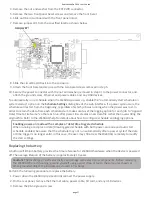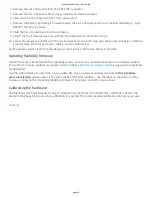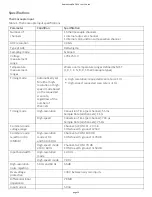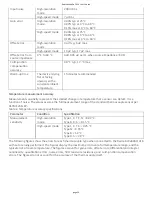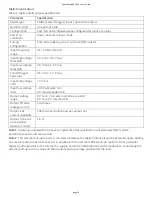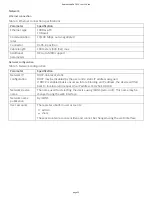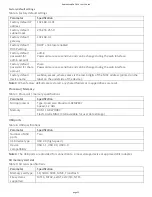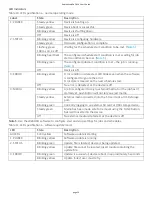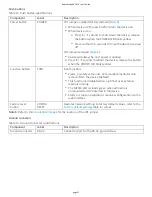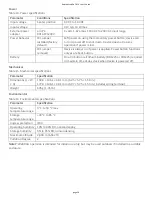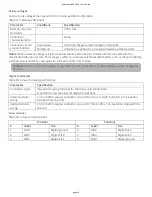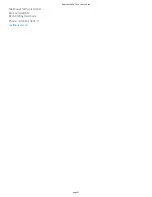
Input noise
High-resolu on
mode
200 nVrms
High-speed mode
7 µVrms
Gain error
High-resolu on
mode
0.03% typ at 25 °C
0.07% typ at 0 °C to 60 °C
0.15% max at 0 °C to 60 °C
High-speed mode
0.04% typ at 25 °C
0.08% typ at 0 °C to 60 °C
0.16% max at 0 °C to 60 °C
Offset error
High-resolu on
mode
4 µV typ, 6 µV max
High-speed mode
14 µV typ, 17 µV max
Offset error from
source impedance
0 °C to 60 °C
Add 0.05 µV per Ω, when source impedance >50 Ω
Cold-junc on
compensa on
accuracy
0.8 °C typ, 1.7 °C max
Warm-up me
The device is lying
flat or facing
upward, with a
constant ambient
temperature.
15 minutes recommended
Temperature measurement accuracy
Measurement sensi vity represents the smallest change in temperature that a sensor can detect. It is a
func on of noise. The values assume the full measurement range of the standard thermocouple sensor per
ASTM E230–87.
Table 2. Temperature accuracy specifica ons
Parameter
Condi on
Specifica on
Measurement
sensi vity
High-resolu on
mode
Type J, K, T, E, N: <0.02 °C
Type B, R, S: <0.15 °C
High-speed mode
Type J, K, T, E: <0.25 °C
Type N: <0.35 °C
Type B: <1.2 °C
Type R, S: <2.8 °C
The following figures show the errors for each thermocouple type when connected to the RedLab WebDAQ 316
with auto zeroing performed. The figures display the maximum error over a full temperature range, and the
typical error at room temperature. The figures account for gain errors, offset errors, differen al and integral
nonlinearity, quan za on errors, noise errors, 50 Ω lead wire resistance, and cold-junc on compensa on
errors. The figures do not account for the accuracy of the thermocouple itself.
RedLab WebDAQ 316 User's Guide
page 20












